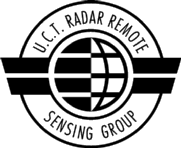
Abstracts of MSc Theses: 1992

List of MSc Theses: 1992
-
M del Mistro
A Study of Bistatic Radar and the Development of an Independent Bistatic Radar Receiver.
Back to list of
Group's MSc Theses
Del Mistro M
A Study of Bistatic Radar and the Development of an Independent Bistatic Radar Receiver
Abstract:
This thesis introduces concepts about bistatic radars, and their
history. Geometry and various measurements are also discussed. A
documented receiver system built is also available within this thesis.
This report contains a literature review of bistatic radar and also
describes an experimental L-Band bistatic radar receiver which was built
at the University of Cape Town.
In a bistatic radar, the transmitter and receiver are separated by an
amount which is comparable to the distance to the targets which are
being displayed. The separation of the transmitter and receiver cause
various parameters to change when comparing the bistatic radar to a
monostatic radar. Some of these parameters are listed below.
-
The radar range equation is now a function of RT2RR2 and no longer
RM4. The gain of the transmitter and receiver antenna must be taken into
account as two different antennas are being used.
-
In a monostatic radar the constant range contours form circles around
the collocated transmitter and receiver, whereas in bistatic radar they
form ellipses and the transmitter and receiver are the foci of the
ellipses.
-
The constant power contours of a monostatic radar are also circles.
In a bistatic radar they are ovals surrounding the transmitter and
receiver. As the ovals get closer to the line separating the transmitter
and receiver (baseline) the ovals collapse and start forming separate
circles around the transmitter and receiver.
-
The coverage of a bistatic radar is the area which is illuminated
simultaneously by both the transmitter and the receiver. The coverage
area can never exceed that of a monostatic radar.
-
The range and cell area resolution degrades as the target approaches
the baseline. In order to compete with a monostatic radar very narrow
transmit and receive antenna beams are required.
-
Due to the separation of the transmitter and the receiver, a PPI
display will be distorted. This distortion is commonly called bistatic
distortion.
-
The bistatic radar target cross section (RCS) varies according to
target position relative to the transmitter and the receiver. When the
target crosses the baseline, its forward RCS is observed. The forward
RCS is sometimes 15dB larger than the monostatic reverse RCS. As the
target moves further away from the baseline the bistatic RCS starts
approximating the monostatic RCS.
-
As the cell area (area of ground illuminated by the transmitter and
receiver antenna) of a bistatic radar is larger than that of the
monostatic radar near the baseline, the bistatic radar is inherently
more susceptible to clutter.
The receiver must maintain synchronization in receiver azimuth and PRF,
at all times, in order to correct for bistatic distortion on a PPI
display. This distortion is corrected by converting the
transmitter-to-target azimuth to the receiver-to-target azimuth and
determining the target-to-receiver range which is a function of the
delay time. The delay time is the time difference between the direct
pulse and the reflected pulse. This will cause the trace on the display
to move in a complex pattern, hence correcting this distortion.
A bistatic radar receiver was built for the Electrical Engineering
Department at UCT. The purpose of the radar is to monitor aircraft
approaching and departing from DF Malan Airport. The motivation for this
project is to utilise one of the main advantages of the bistatic radar.
Back to list of
Group's MSc Theses
Return to
RRSG's Homepage
This page was last updated in January 2007 (RL)



![]()